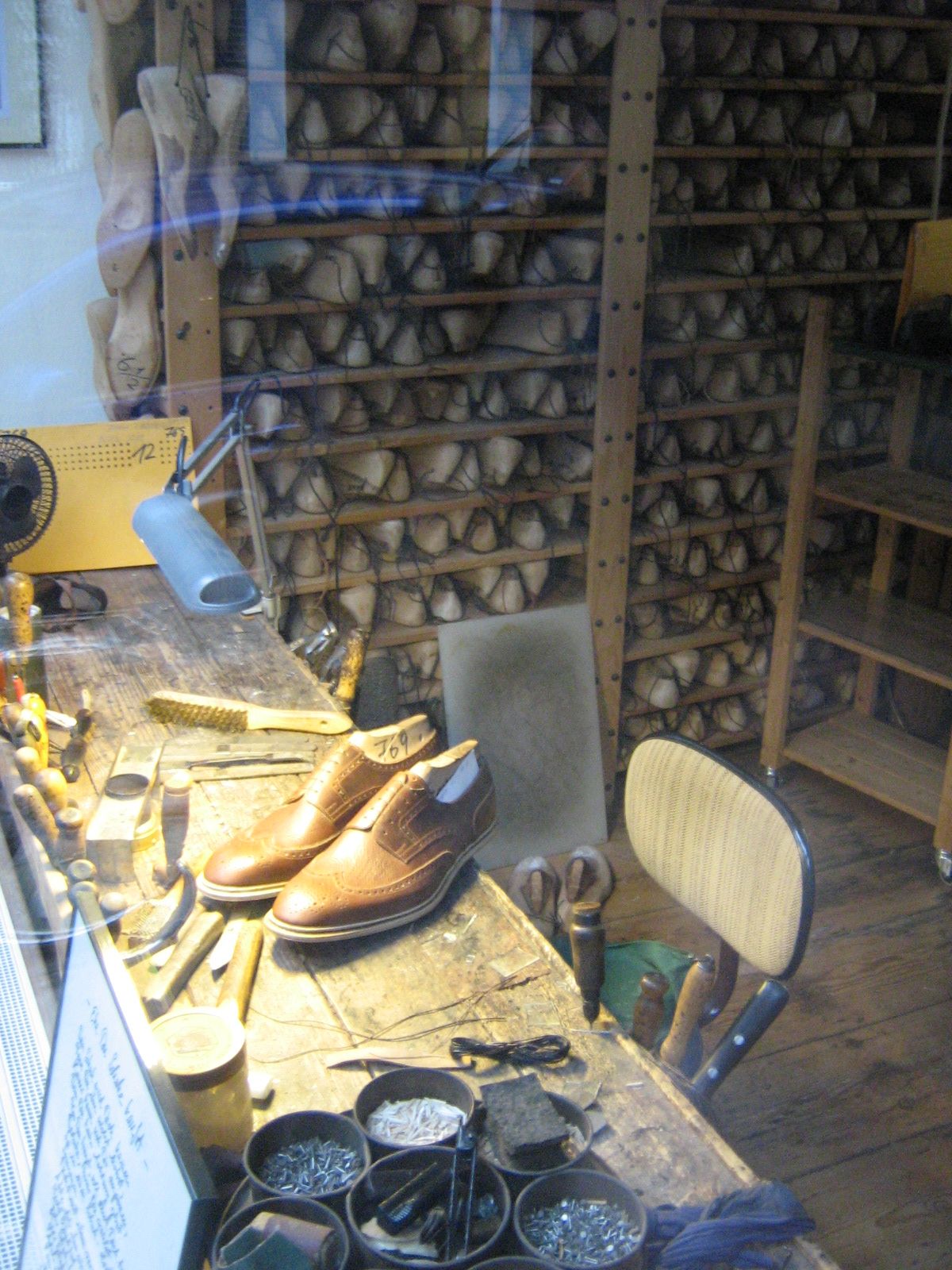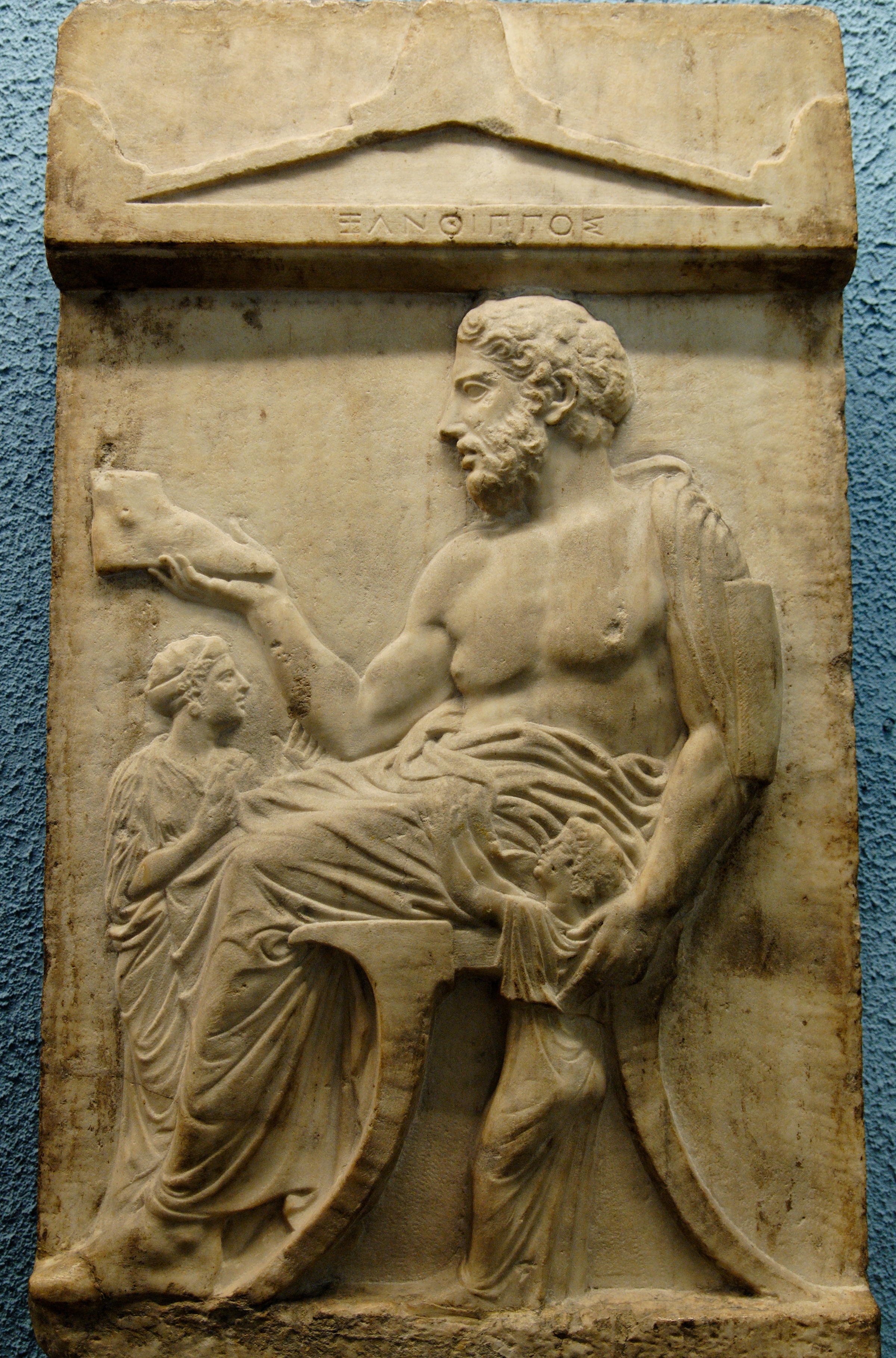cordwainer on:
[Wikipedia]
[Google]
[Amazon]

 A cordwainer () is a
A cordwainer () is a This glossary
defines corvisor or corvysor as shoemaker

 A cordwainer () is a
A cordwainer () is a shoemaker
Shoemaking is the process of making footwear.
Originally, shoes were made one at a time by hand, often by groups of shoemakers, or cobblers (also known as ''cordwainers''). In the 18th century, dozens or even hundreds of masters, journeymen an ...
who makes new shoes from new leather. The cordwainer's trade can be contrasted with the cobbler's trade, according to a tradition in Britain that restricted cobblers to repairing shoes. This usage
The usage of a language is the ways in which its written and spoken variations are routinely employed by its speakers; that is, it refers to "the collective habits of a language's native speakers", as opposed to idealized models of how a languag ...
distinction is not universally observed, as the word ''cobbler'' is widely used for tradespersons who make or repair shoes.
The Oxford English Dictionary
The ''Oxford English Dictionary'' (''OED'') is the first and foundational historical dictionary of the English language, published by Oxford University Press (OUP). It traces the historical development of the English language, providing a c ...
says that the word ''cordwainer'' is archaic, "still used in the names of guilds, for example, ''the Cordwainers' Company''"; but its definition of ''cobbler'' mentions only mending, reflecting the older distinction. Play 14 of the Chester Cycle was presented by the guild of corvisors or corvysors.defines corvisor or corvysor as shoemaker
Etymology
The term ''cordwainer'' entered English as ''cordewaner(e)'', from theAnglo-Norman Anglo-Norman may refer to:
*Anglo-Normans, the medieval ruling class in England following the Norman conquest of 1066
*Anglo-Norman language
**Anglo-Norman literature
*Anglo-Norman England, or Norman England, the period in English history from 1066 ...
''cordewaner'' (from Old French
Old French (, , ; Modern French: ) was the language spoken in most of the northern half of France from approximately the 8th to the 14th centuries. Rather than a unified language, Old French was a linkage of Romance dialects, mutually intel ...
''cordoanier'', ''-ouanier'', ''-uennier'', etc.), and initially denoted a worker in cordwain or cordovan, the leather historically produced in Moorish Córdoba, Spain
Córdoba (; ),, Arabic: قُرطبة DIN: . or Cordova () in English, is a city in Andalusia, Spain, and the capital of the province of Córdoba. It is the third most populated municipality in Andalusia and the 11th overall in the country.
The ...
in the Middle Ages, as well as, more narrowly, a shoemaker. The earliest attestation in English is a reference to “Randolf se cordewan re��, ''ca.'' 1100.
According to the ''OED'', the term is now considered obsolete except where it persists in the name of a trade-guild or company, or where otherwise employed by trade unions.
History
British tradition distinguishes the terms ''cordwainer'' and ''cobbler'', restricting cobblers to repairing shoes. In this usage, a ''cordwainer'' is someone who makes new shoes using new leather, whereas a ''cobbler'' is someone who repairs shoes. Medieval cordwainers used cordovan leather for the highest-quality shoes, but cordwainers also used domestically produced leathers and were not solely producers of luxury footwear.British Isles
In the historic London guild system, the cobblers and cordwainers formed separate guilds, and the cobblers were forbidden by the Mayor of London in 1395 from working in new leather, and cordwainers similarly forbidden to meddle with old shoes. Historically, cobblers also made shoes, but only using old leather recovered from discarded or repaired shoes. Today, many makers ofbespoke
The word ''bespoke'' () has evolved from a verb meaning 'to speak for something', to its contemporary usage as an adjective. Originally, the adjective ''bespoke'' described tailor-made suits and shoes. Later, it described anything commissioned t ...
shoes will also repair their own work, but shoe repairers are not normally in a position to manufacture new footwear.
In London
London is the capital and List of urban areas in the United Kingdom, largest city of England and the United Kingdom, with a population of just under 9 million. It stands on the River Thames in south-east England at the head of a estuary dow ...
, the guild
A guild ( ) is an association of artisans and merchants who oversee the practice of their craft/trade in a particular area. The earliest types of guild formed as organizations of tradesmen belonging to a professional association. They sometim ...
of the Worshipful Company of Cordwainers historically controlled the occupation of cordwainer. Granted a royal charter
A royal charter is a formal grant issued by a monarch under royal prerogative as letters patent. Historically, they have been used to promulgate public laws, the most famous example being the English Magna Carta (great charter) of 1215, b ...
of incorporation in 1439, the Guild had received its first ordinance in 1272. Historically, most of London's cordwainers lived and worked in the ward of the City of London
The City of London is a city, ceremonial county and local government district that contains the historic centre and constitutes, alongside Canary Wharf, the primary central business district (CBD) of London. It constituted most of London f ...
named Cordwainer.
Until 2000 a Cordwainers' Technical College existed in London. For over a hundred years, the college had been recognised as one of the world's leading establishments for training shoemakers and leather workers. It produced some of the leading fashion design
Fashion design is the Art (skill), art of applying design, aesthetics, clothing construction and natural beauty to clothing and its Fashion accessory, accessories. It is influenced by culture and different trends, and has varied over time and plac ...
ers, including Jimmy Choo (born 1948) and Patrick Cox
Patrick Cox (born March 19, 1963) is a Canadian-British fashion designer and an eponymous fashion label specializing in the creation of shoes, leather goods and Fashion accessories, accessories. Cox is most noted for the use of unusual materials ...
(born 1963). In 2000 Cordwainers' College was absorbed into the London College of Fashion
The London College of Fashion is a constituent college of the University of the Arts London, in London, England. It offers undergraduate, postgraduate, short courses, study abroad courses and business-training in fashion, make-up, beauty-thera ...
, the shoe-design and accessories departments of which have become "Cordwainers at London College of Fashion".
In Scotland, in 1722, the cordwainers petitioned “to be incorporated and separated from the shoe-makers "or those who make single-soled shoes".
United States
Settlers who sailed to Virginia in 1607 to settle in Jamestown included cordwainers. By 1616 the secretary of Virginia reported that the leather- and shoe-trades were flourishing. Christopher Nelme, of England, was the earliest recorded named shoemaker in the American colonies; he sailed to Virginia fromBristol
Bristol () is a City status in the United Kingdom, city, Ceremonial counties of England, ceremonial county and unitary authority in England. Situated on the River Avon, Bristol, River Avon, it is bordered by the ceremonial counties of Glouces ...
in 1619.
In 1620 the Pilgrims landed in Massachusetts near the site of modern Provincetown. Nine years later, in 1629, the first shoemakers arrived, bringing their skills with them.
In 1984 a group of shoemakers and historians founded the Honourable Cordwainers' Company as a modern guild; they drew up its charter in the following year. In 1987 the Company "incorporated as a non-profit, tax-exempt educational organization in the state of Virginia, the home of America's first shoemakers", and was granted official status through recognition by The Master of The Worshipful Company of Cordwainers, London, England.
Canada
The early settlers of Canada also included cordwainers. On 14 June 1749, the newly appointed Lieutenant Governor ofNova Scotia
Nova Scotia ( ; ; ) is one of the thirteen provinces and territories of Canada. It is one of the three Maritime provinces and one of the four Atlantic provinces. Nova Scotia is Latin for "New Scotland".
Most of the population are native Eng ...
, Edward Cornwallis
Edward Cornwallis ( – 14 January 1776) was a British career military officer and was a member of the aristocratic Cornwallis family, who reached the rank of Lieutenant General. After Cornwallis fought in Scotland, putting down the Jacob ...
, arrived off Chebucto Head, Nova Scotia in the sloop-of-war HMS ''Sphinx'' with the objective of establishing the settlement now called Halifax. By 27 June, thirteen transport-ships following the ''Sphinx'' reached the harbour with the initial 2,576 British settlers – among them nineteen cordwainers.
See also
* Daughters of St. Crispin, an American labour union of female shoemakers * List of shoe styles *Order of the Knights of St. Crispin
The Order of the Knights of St. Crispin was an American labor union of shoe workers formed in Wisconsin in 1867. It soon reached a membership of 50,000 or more, largely in the Northeast. However it was poorly organized and faded away by 1874. The ...
, an American labor union of 50,000 shoemakers c. 1870
References
{{Authority control Artisans Shoemakers